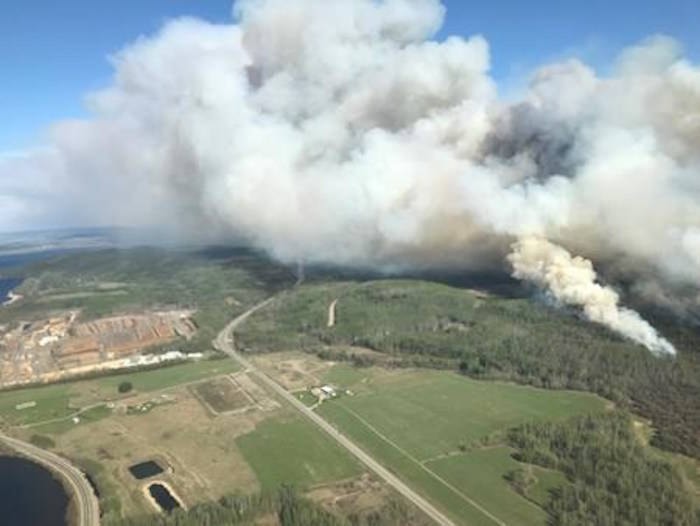A FireSmart educator for the Regional District of Bulkley-Nechako (RDBN) is gearing up to do home and neighbourhood assessments.
Lindsay King was in Smithers last week putting up posters and promoting the program which is aimed at making communities more fire-resilient.
“Wildfires are a natural occurrence in the Regional District of Bulkley-Nechako, with some easy steps and a little bit of work, we can significantly reduce the risk of wildfires spreading into urban areas,” she said.
“One of the easiest ways that homeowners can become FireSmart is by keeping their properties clean of debris such as leaves, needles, and dead growth from gutters, gardens and underneath decks,” she continued, adding fuel sources (such as patio furniture and firewood stacks) should be moved at least 10 metres away from buildings.
She also noted that when constructing new homes or renovating, homeowners can use FireSmart materials (such as Class A rated roofing).
For gardens she advises to avoid highly combustible vegetation such as cedar and juniper, to instead opt for fire-resistant species. Characteristics of fire-resistant species are moist, supple leaves. They do not accumulate much dead growth, and produce little sap or resin.
Spacing trees three metres apart, and pruning the branches from the bottom two metres is a good way to make larger properties Firesmart, she said.
According to Natural Resources Canada (NRC) the risk of wildfires across much of northern B.C. as of May 31 was high to very high. Although Smithers and area is currently rated moderate, the Bulkley Valley is just north of the high to very high danger zone and NRC predicts a hot, dry summer.
King cautioned people in this area to avoid misconceptions about the program.
“Some common mistakes people make are thinking that FireSmarting their property will be expensive, or they don’t need to be FireSmart because they do not live next to a forested area, or waiting until the last minute to make an exit plan,” she said.
“Many FireSmart activities are free or relatively inexpensive, and only require a little manual labour. Wildfires typically spread by flying embers, which makes them unpredictable. Living in the Regional District of Bulkley-Nechako, you are surrounded by significant forest cover, so FireSmarting your property is something everyone should be concerned about. It’s also important to plan for the worst-case scenario — have an evacuation plan in place, so you won’t be caught off-guard.”
King can and wants to help with that. In the coming weeks, she will be scheduling residential and community assessments throughout the rural areas of the region and is planning webinars on the Regional District of Bulkley-Nechako website (rdbn.ca).
She is available by request on the RDBN website of by phone at 250-692-3195. For neighbourhoods that want to get involved she noted training can also be made available for volunteers who can then facilitate a community response.
-files from Aman Parhar
